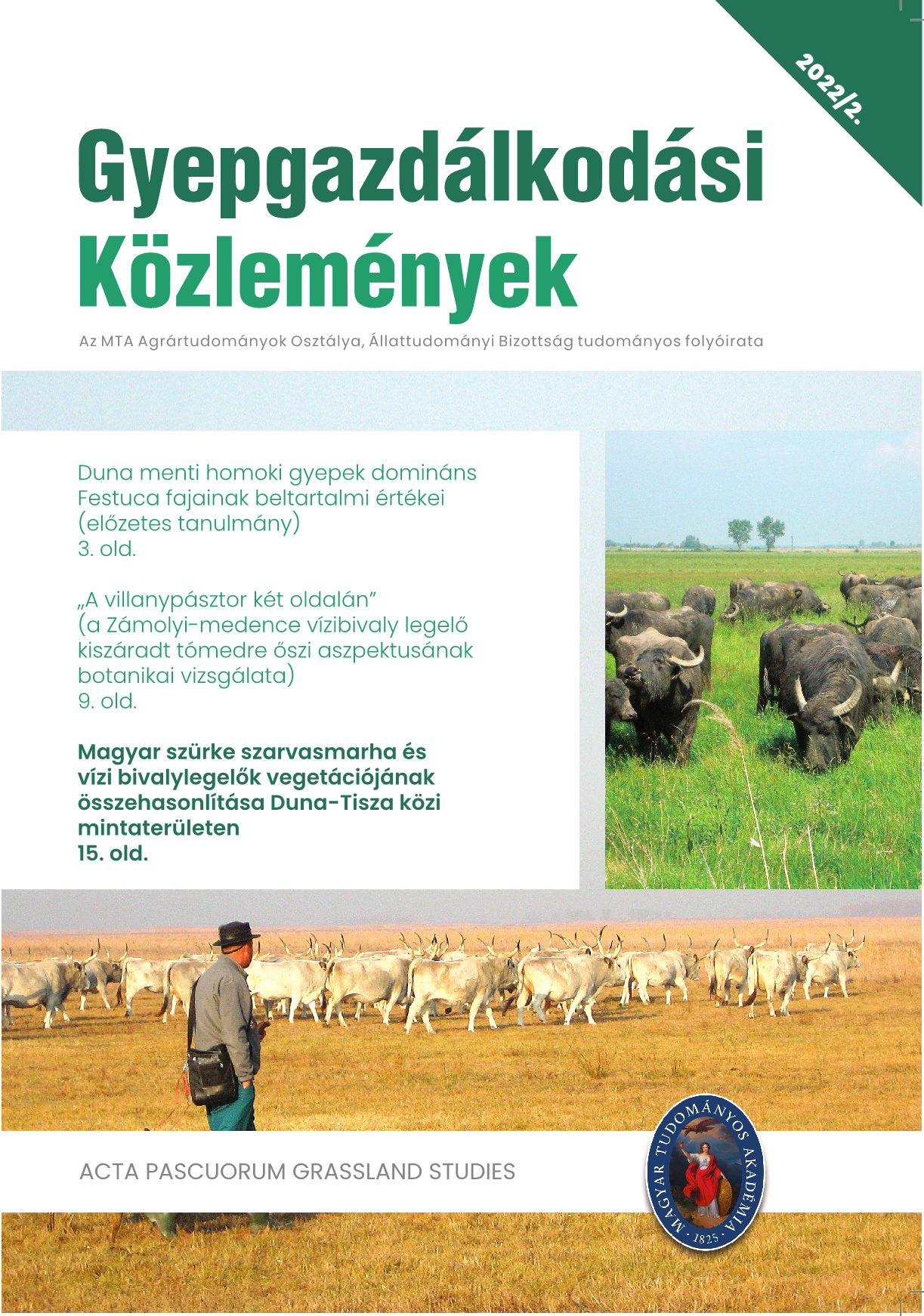A villanypásztor két oldalán: A Zámolyi-medence vízibivaly legelő kiszáradt tómedre őszi aszpektusának botanikai vizsgálata
Szerzők
Megtekintés
Kulcsszavak
Licenc
Copyright (c) 2023 Gyepgazdálkodási Közlemények

This work is licensed under a Creative Commons Attribution-NonCommercial-NoDerivatives 4.0 International License.
Hogyan hivatkozzuk
Absztrakt
Vizsgálataink a Zámolyi-medencében található vízibivaly legelőn a Csíkvarsai-rét területén történtek, egy volt tónak a medrében, aminek a vizét 2022-ben leeresztették, majd őszre kiszáradt, és vízibivalyokkal legeltették. A legelt részt villanypásztorral körbekerítették. Ezt a részt és a kívül eső terület növényzetét mértük fel késő ősszel, november 19-én. Mind a két elkülönített területen 3-3 cönológiai felvételt készítettünk. Az eredmények alapján jelentős florisztikai és a vegetáció fiziognómiájában megmutatkozó különbségek voltak jelen. A here fajok közül a legelt részen a talajon futó szárú fajok (Trifolium repens és T. fragiferum) voltak az uralkodók, míg a legeletlen részen a tómederben 30-40 cm magas, sűrűn elhelyezkedő korcshere (Trifolium hybridum) alkotott összefüggő állományt. Ezen kívül florisztikai szempontból újdonság volt a vastag bajuszpázsit (Crypsis schoenoides) előfordulása is.
A vízborítás megszűnésével a területen tömegessé vált több Trifolium faj is, ami a fajok csírázási tulajdonságainak köszönhető. A vastag maghéj megrepedezett a vízborítás hőmérséklet-kiegyenlítő hatásának megszűnése következtében, és elindulhatott a csírázás, melynek eredményeképpen dominánssá válhatott a területen. A jelen vizsgálat során nagyon látványos eredményét láthattuk a Zámolyi-medencében a tófenék őszi állapotát elemezve, amely a vízibivaly legeltetés hatásaként kialakult növényzeti összetétel. A legelt térszínen a fajszám sokkal jelentősebb volt, közülük florisztikai ritkaság is előkerült, valamint a legeltetés indikátoraként azonos nemzetségen belül is eltérő életforma típusú fajok váltak uralkodóvá.

 https://doi.org/10.55725/gygk/2022/20/2/11573
https://doi.org/10.55725/gygk/2022/20/2/11573